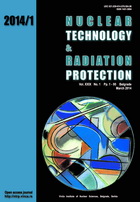
INFLUENCE OF THE SCINTILLATION CRYSTAL OPTION ON THE DETECTOR RESPONSE OF PET DEVICES
Pages: 40-45
Authors: Vojislav M. AntiŠ, Koviljka Dj. StankoviŠ, Miloš Lj. VujisiŠ, and Predrag V. OsmokroviŠ
Abstract
Positron emission tomography is a technology that provides unique and exquisite possibilities in functional diagnostics, in the sense that it is the most efficient and most reliable method for obtaining information about biochemical activity and cellular metabolism in the body, by determining exact localization and performing semi-quantitative assessment of the distribution of a radioactive tracer. This paper compares the characteristics of recently introduced lutetium based crystals to those of conventionally used bismuth-ortho-germanate scintillators; both options are used as scintillation detectors within the positron emission tomography systems. Energy resolution and scintillation decay time of lutetium based crystals and bismuth-ortho-germanate crystals was experimentally tested. Main scintillation detector parameters which affect the resulting detector response are considered and analyzed, since they serve as the basis for a positron emission tomography medical image.
Key words: positron emission tomography, scintillation crystal, detector response
FULL PAPER IN PDF FORMAT (688 KB)
